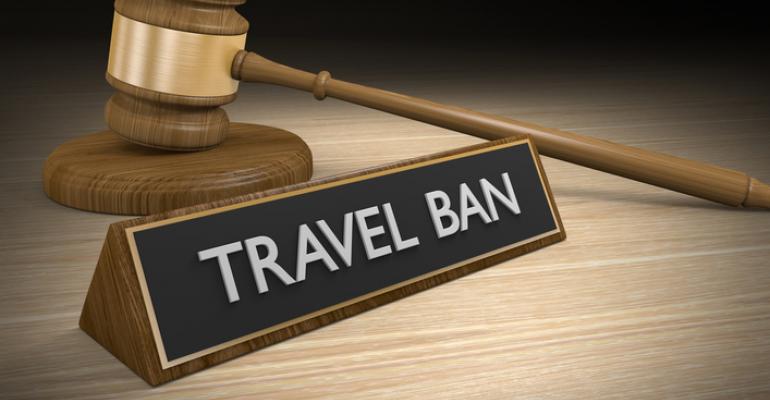The Supreme Court has begun hearing arguments on the latest version of the immigration policy dubbed the “Travel Ban.” The state of Hawaii is suing the Trump administration to prevent the executive order, which was implemented in December, from becoming permanent. Although the court won’t rule until June at the earliest, according to news organizations including The Los Angeles Times, the justices seem likely to find in favor of the ban.
This is the third iteration of the policy, which began as an executive order signed by President Trump in January 2017. Even after revisions and clarifications to the initial policy were made, the meetings industry was concerned about the impact of the ban on international event attendees.
The latest version includes a ban on visas to the U.S. for visitors from Iran, Libya, North Korea, Somalia, Syria, Venezuela, and Yemen, and also reduces the number of refugees the U.S. will take, 45,000, versus 110,000 under the previous administration.
For meeting planners, the actual number of event attendees from the countries named in the ban is thought to be very small, but the concern for many planners is the reputational damage to the U.S. and the possibility that international travelers who are eligible for a visa might decide not to attend an event out of solidarity with colleagues who would not be granted one. It is difficult to find hard numbers on the so-called “Trump Slump” of potential visitors deciding against travel to the United States. On April 6, the International Trade Administration’s National Travel and Tourism Office announced it would not release data on visitor numbers until it can be sure of the accuracy of the figures.
In response, U.S. Travel Association Senior Vice President for Government Relations Tori Barnes said, “Even if changes to the official federal data reveal stronger numbers of visitors to the U.S. in 2017 than previously reported, the fact will remain that while international travel is spiking globally, the U.S. is losing share of that growing market to our competitors around the world.”
New information from ForwardKeys suggests that although travel to the U.S. is increasing, it is lagging behind global bookings by a significant percentage.
Olivier Jager, CEO of ForwardKeys, said: “In the period between Donald Trump announcing his first travel ban and the federal judge’s initial temporary blockage, bookings for inbound travel to the U.S. fell 6.5 percent. In the 15-month period between that first announcement and 20 April 2018, inbound travel to the U.S. was 1.4 percent down while global international travel grew 5.0 percent, on the equivalent period a year earlier.“
It is not clear how much of that travel was business- or events-related, and there are other factors including fluctuations in currency exchange rates that may influence those numbers.
However, there does seem to be evidence that fewer visas are being granted since the ban went into effect. In the month following December 8, 2017, Reuters reports that 8,400 applications for waivers of the ban were made from Chad, Iran, Libya, North Korea, Syria, Somalia, Yemen, and Venezuela, but only 100 visas were granted.
Although the Visit U.S. Coalition has not commented on the current case before the Supreme Court, spokesman Amos Snead said, “Since 2015, the U.S. has lost market share in international travel, which translates to billions of dollars lost for the American economy. The Visit U.S. Coalition is actively working to reverse this trend and realize the economic benefits of international travel to the U.S., creating jobs in cities and towns across the country."





